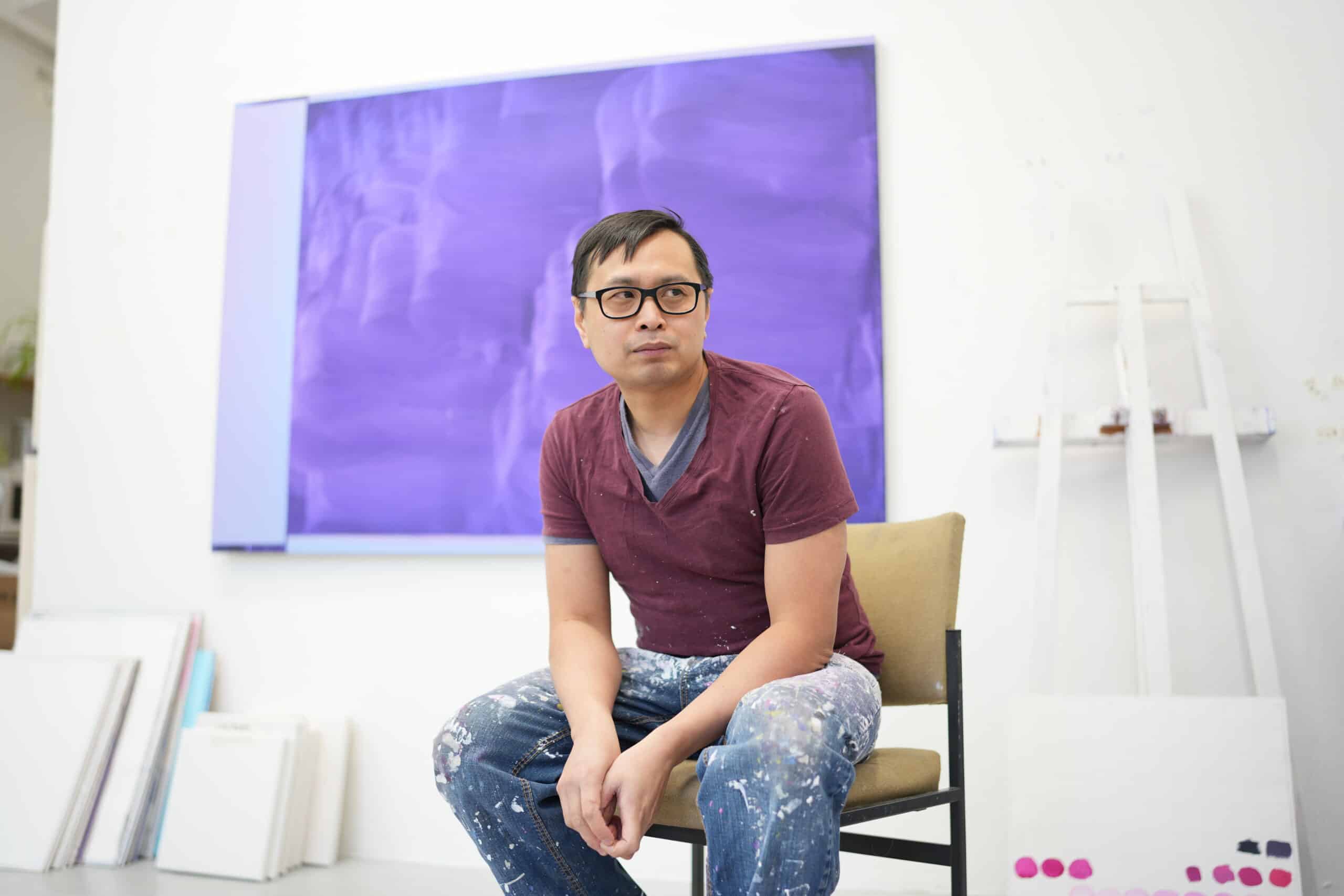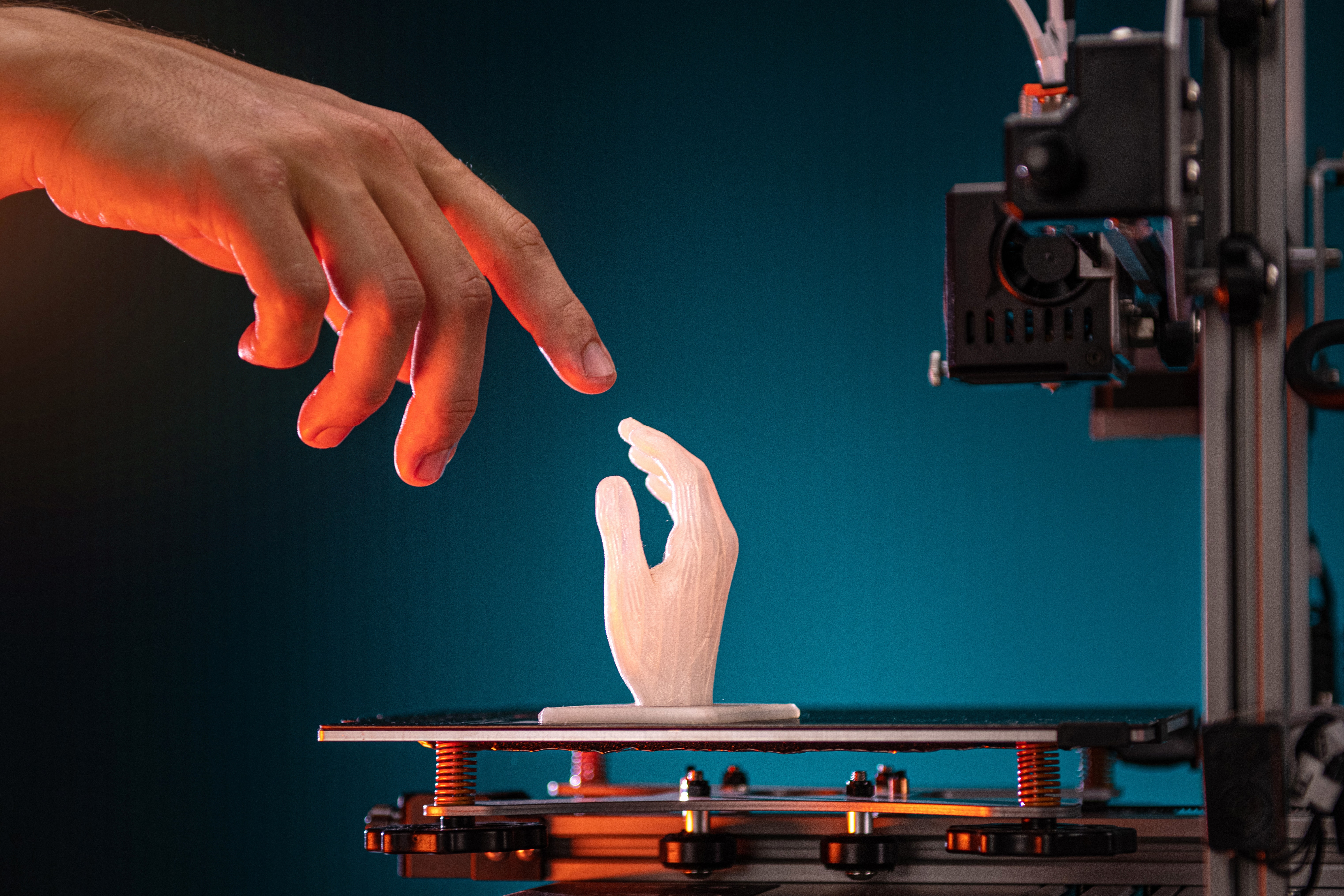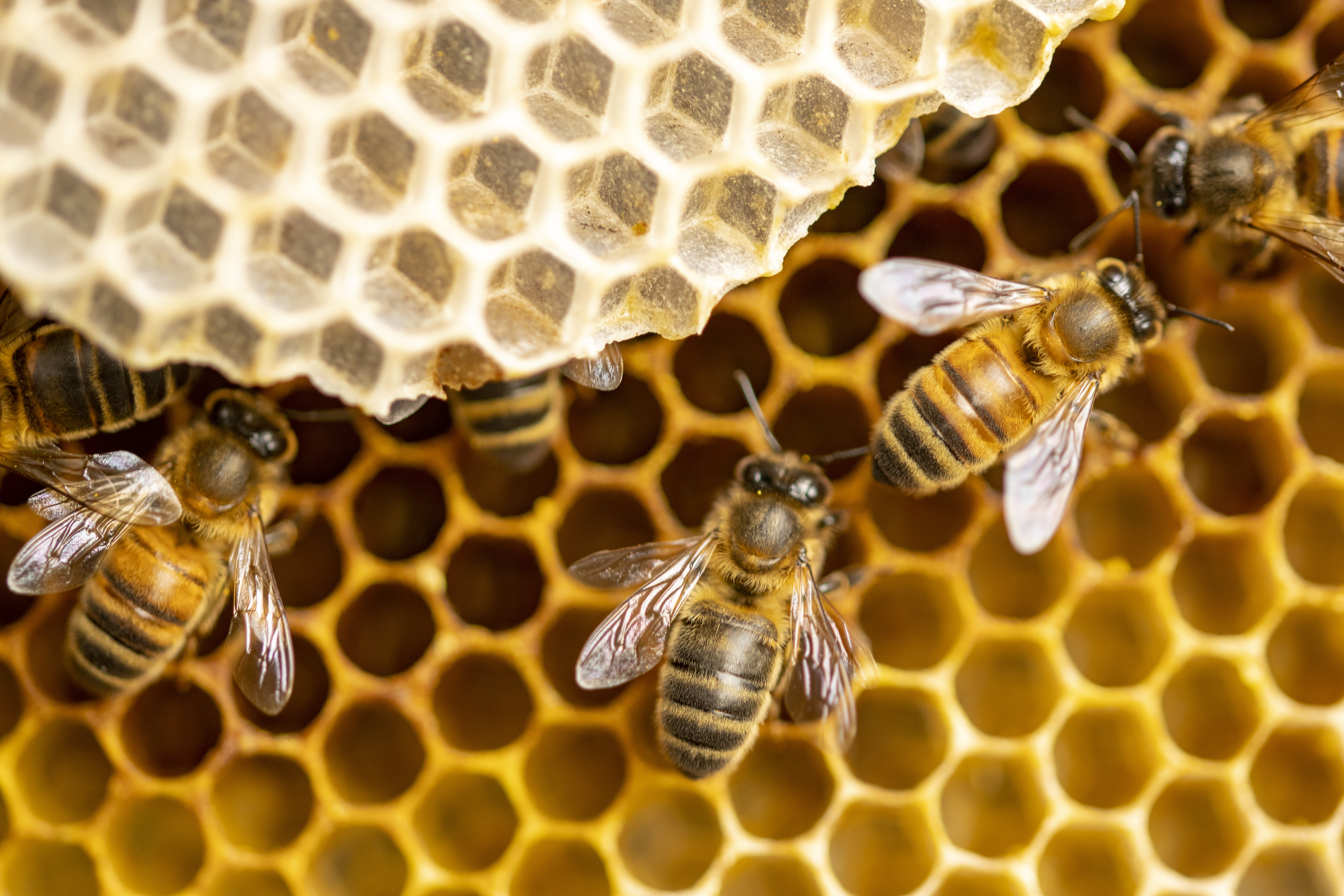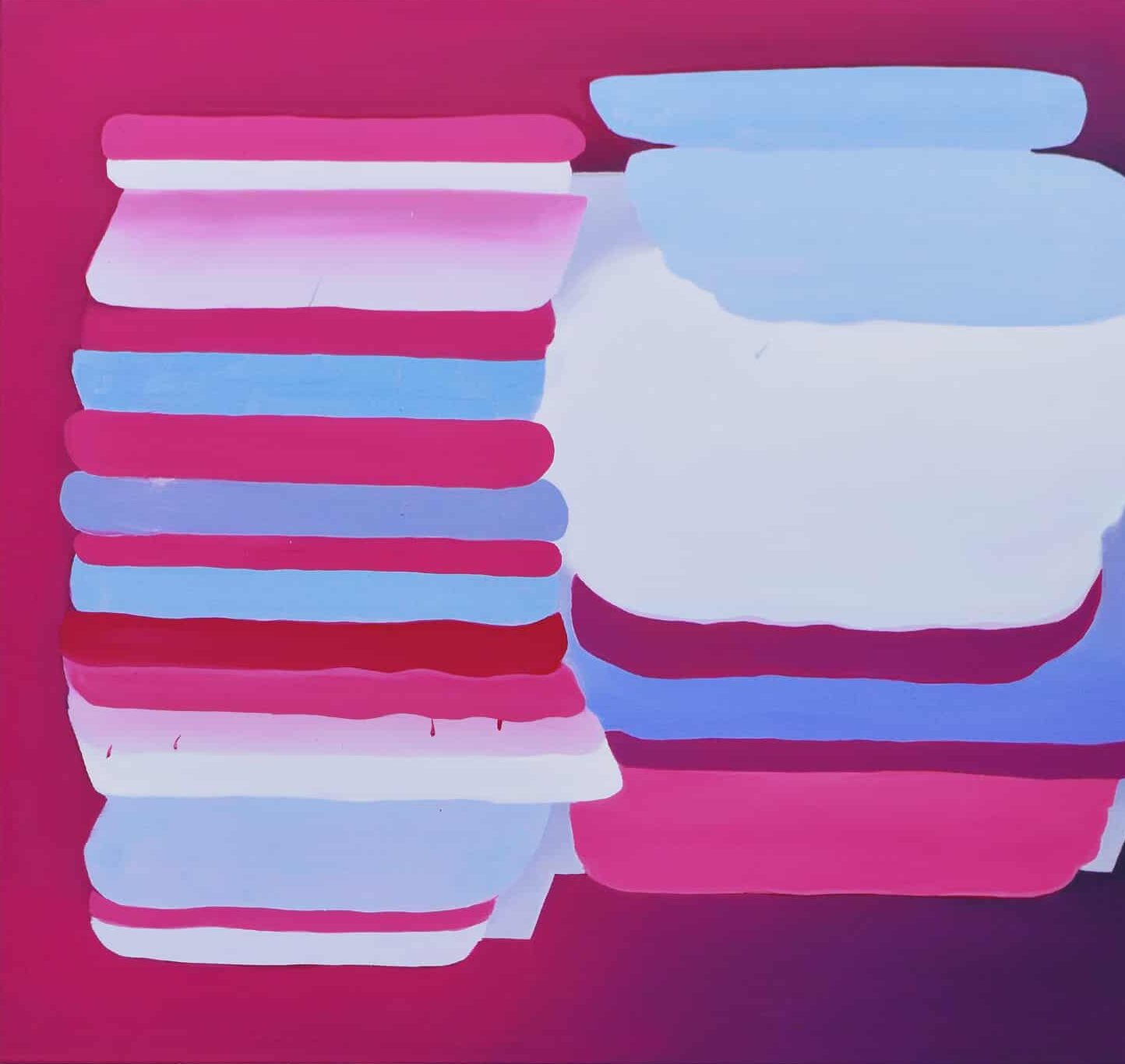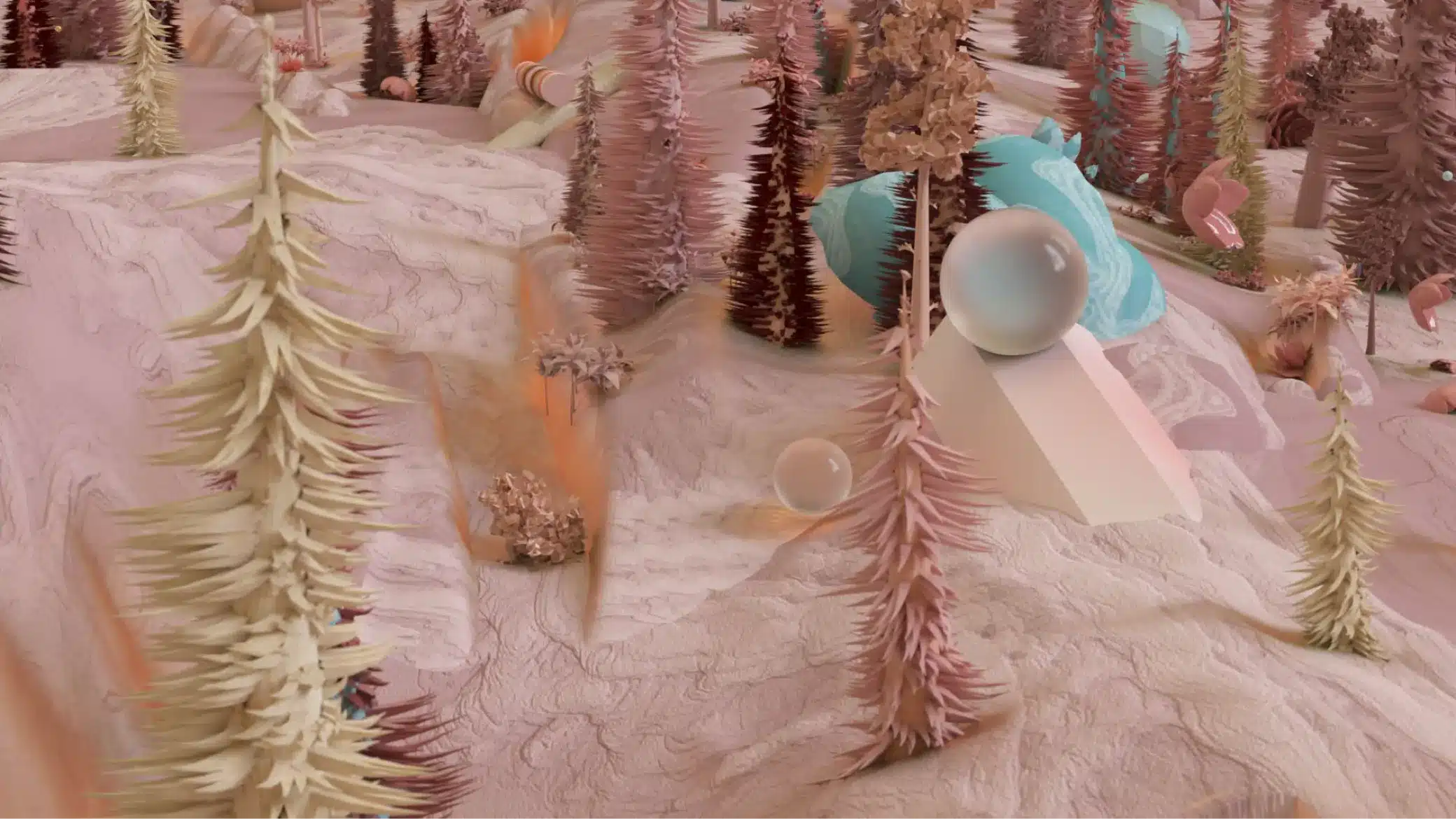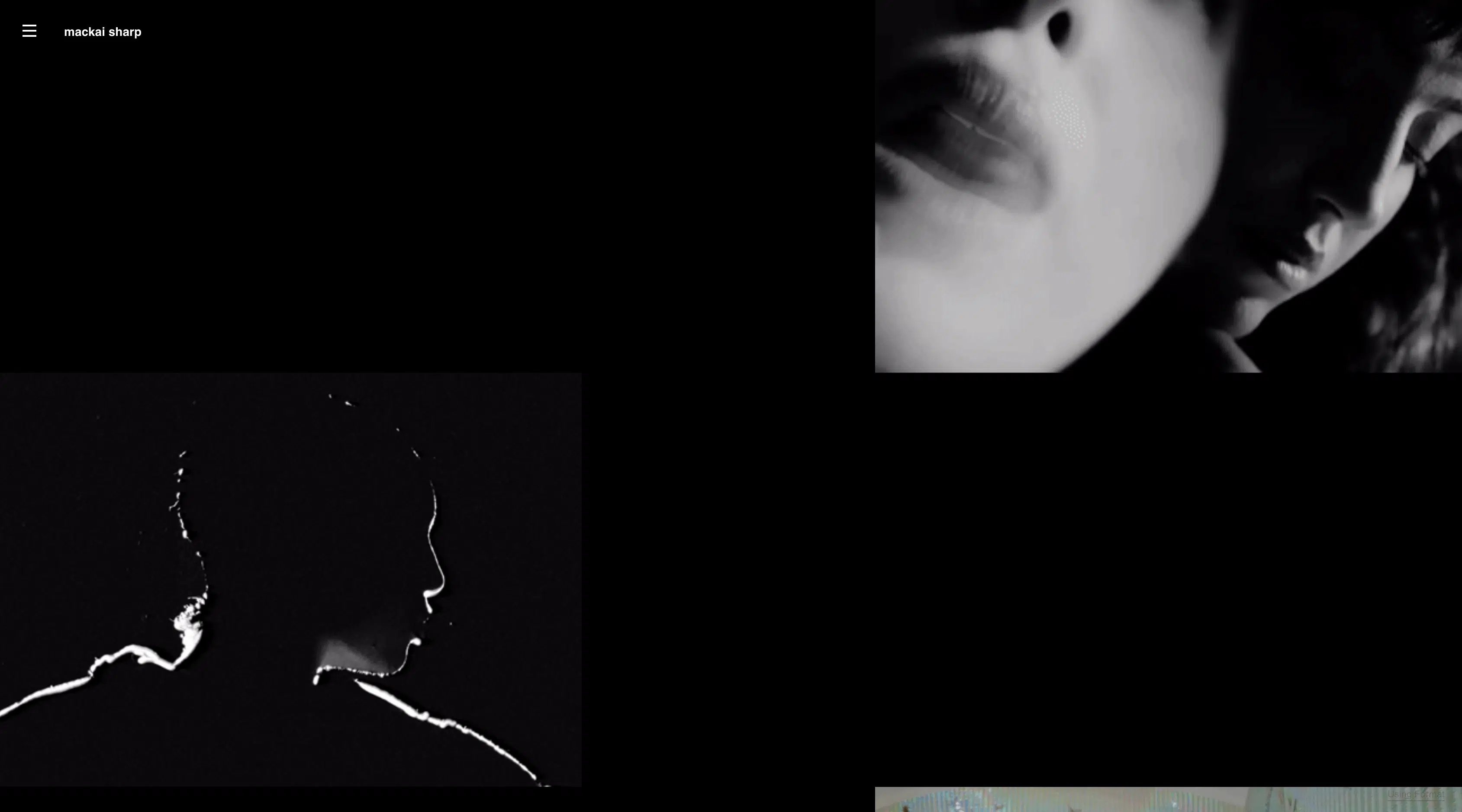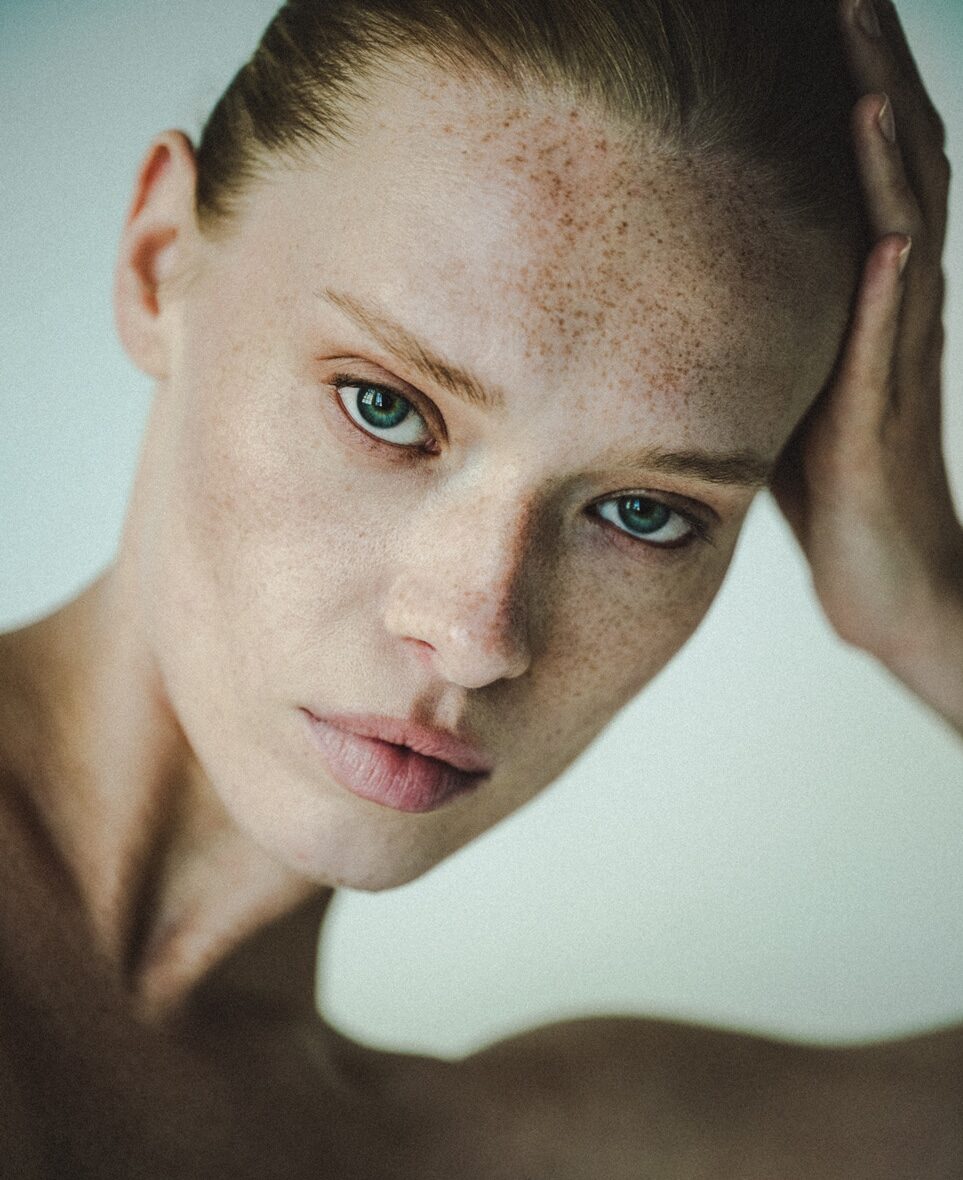Em janeiro de 2025, Nguyen abrirá uma grande exposição para duas pessoas com Lionel Allingham no Galeria de arte de Grand Prairie. Apresentando mais de vinte de suas pinturas dos últimos cinco anos, essa exposição reúne esses dois pintores abstratos que, embora separados por idade, cultura e comunidade, refletem sobre os espaços abertos de Edmonton, Alberta, onde cresceram. Ao sentar-se com o Format para falar sobre pintura, Nguyen explora a navegação em comunidades artísticas internacionais e a pintura além da linguagem.
Assista ao vídeo: No local com Nam Duc Nguyen em Berlim
Conte-nos sobre sua trajetória como artista. Quando e como você começou?
Tenho muita sorte por minha família ser criativa. Meu pai é poeta. Portanto, fui criado em um ambiente de criatividade. Meu pai lia seus poemas para os amigos, muitos dos quais também eram artistas ou poetas. Nossa casa era coberta de fotografias, gravuras e pinturas de seus amigos. Lembre-se de que todos eles trabalhavam na tradição modernista vietnamita, portanto, era uma comunidade realmente específica com sua própria estética exclusiva em Edmonton. Desde muito jovem, percebi que a criatividade ou a arte poderia moldar o mundo ou, pelo menos, moldar a maneira como outras pessoas vivenciam o mundo. E isso me deixou muito animado para seguir essa carreira.
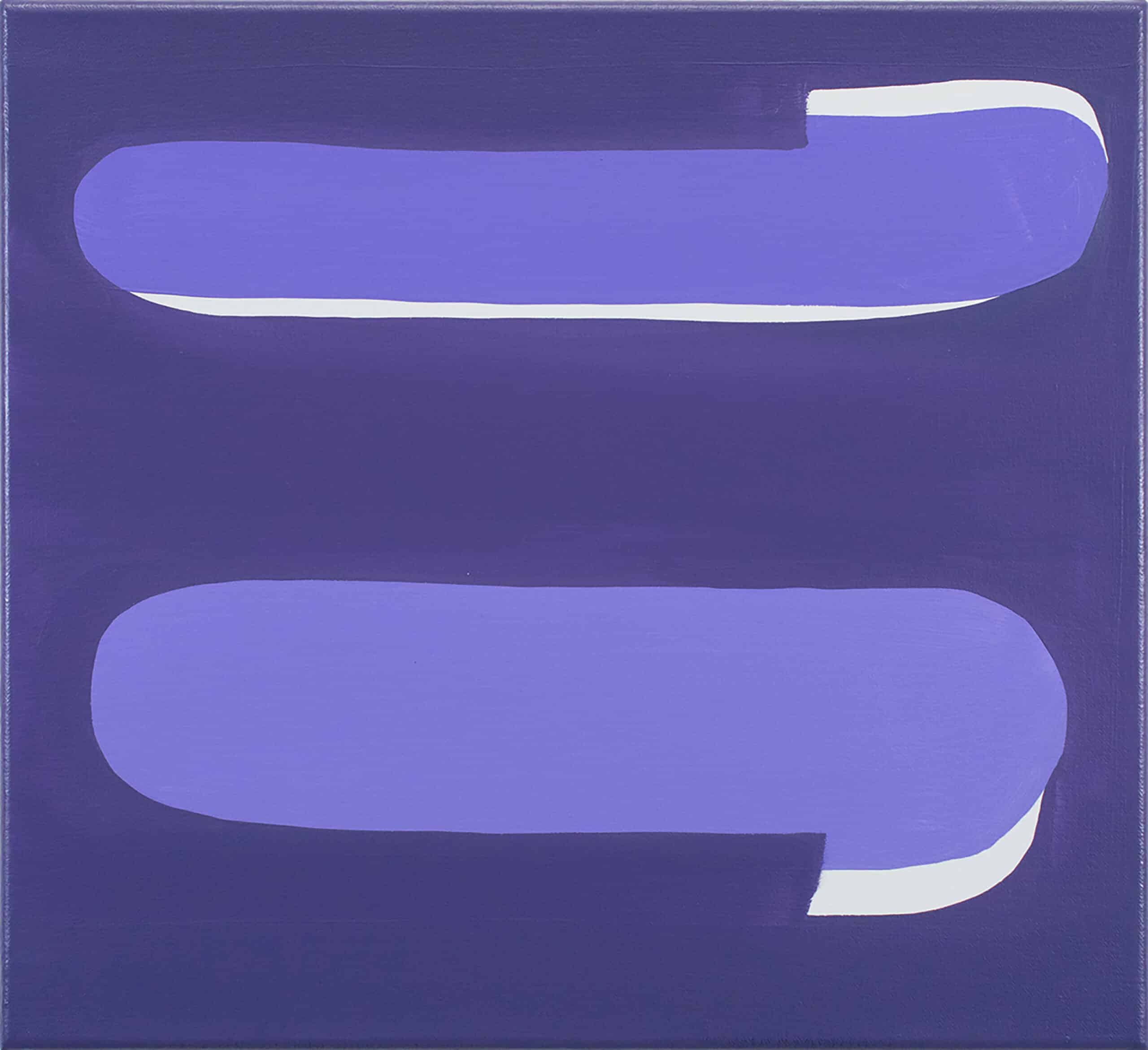
Você vê alguma dessas influências do modernismo vietnamita em sua pintura? Você acha que isso afetou a maneira como você pinta?
É interessante desvendar minha relação com o modernismo vietnamita porque, embora eu tenha sido criado com esse trabalho ao meu redor, ele era muito diferente da cultura em que cresci - Edmonton, Alberta. Cresci vivenciando esse estranho choque entre meu mundo em casa e minha experiência de integração no Canadá. Meus pais eram refugiados, portanto, embora eu visse a cultura vietnamita em casa, sentia-me distante dela de certa forma, porque cresci imerso na cultura canadense.
Acho que esse equilíbrio entre várias identidades, culturas e idiomas é algo muito comum para muitos canadenses - é um país de imigrantes de várias culturas. Acho que crescer nessa dicotomia fez com que eu realmente gravitasse em torno de formas de expressão não narrativas; seja música clássica indiana, jazz improvisado ou música experimental eletrônica, tudo isso tem a ver com proporcionar a alguém uma experiência fora da linguagem e da narrativa.
Para ser sincero, eu não compreendia totalmente a poesia vietnamita do meu pai. Acho que não entendia o idioma suficientemente bem para apreciar totalmente seu trabalho. Mas ela soava muito bonita porque, na tradição modernista, ele estava explorando as palavras como um tipo de material. A entonação e a qualidade da maneira como ele falava eram suficientes para que eu conseguisse extrair algo disso. E não só isso, ver o impacto no público e como eles ficaram hipnotizados por seu trabalho me fez perceber que a arte, mesmo que não seja totalmente compreendida, pode comover as pessoas.
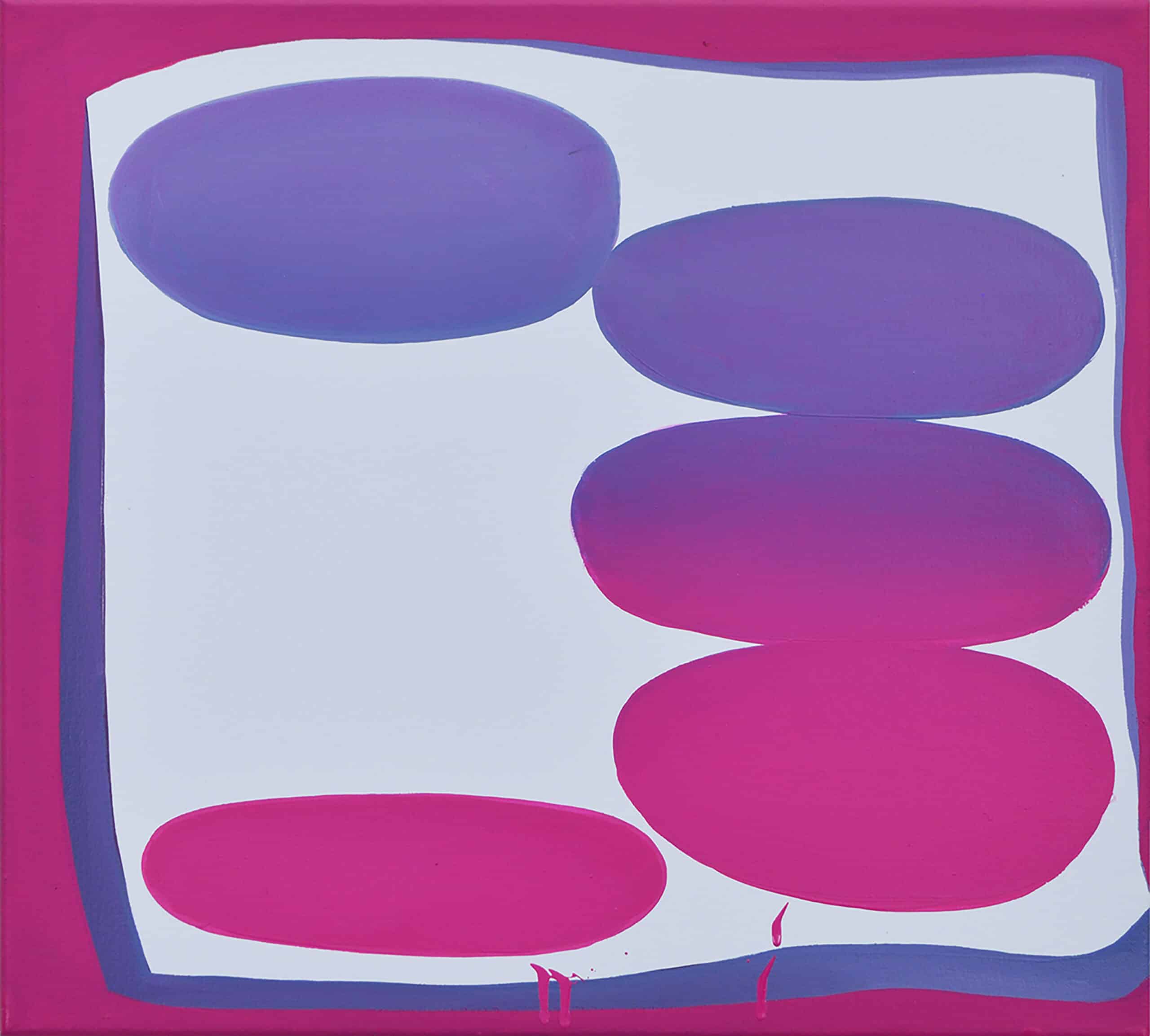
Fale-nos sobre seu treinamento formal. Como isso afetou e moldou seu trabalho?
Nguyen foi treinado em várias instituições, tendo primeiramente estudado em uma escola para obter um diploma de pré-negócios, mas mudou de direção, frequentando o que hoje é o Universidade Grant MacEwen para um programa de dois anos, concluindo um BFA no Emily Carr Institute of Art and Design (agora Universidade Emily Carr) e, finalmente, um mestrado na NSCAD (Universidade) em Halifax.
Acho que, de certa forma, cada escola e cada cidade me ensinaram as diferenças das conversas e dos discursos regionais e como eles se desenvolvem. Eu estudei na década de 1980, então as coisas estão um pouco diferentes agora com o surgimento das mídias sociais, mas naquela época você podia realmente ver como um lugar e sua comunidade criavam sua própria abreviação para linguagens e discursos visuais e materiais.
Na Grant MacEwan Community College, a ênfase era realmente no artesanato e tudo lá estava muito enraizado no treinamento formal. Aprendi muito sobre desenvolvimento de habilidades e materiais. Aprendi a desenhar lá, parece tão simples, mas essa é uma habilidade que realmente se manteve em minha prática. Mais tarde, quando fui para Vancouver, para a Emily Carr, foi uma mudança completa. Tudo era muito conceitual e muito teórico. A quantidade de teoria foi um pouco chocante e senti que precisava me atualizar. Também tive a sorte de ter professores incríveis no programa de pintura, Elizabeth McIntosh, Landon McKenzie, Jordan Broadworthe outros que formaram uma rede de apoio na escola de pintura.
Depois, tive a chance de mesclar essas duas formas de trabalhar e pensar quando fui para o NSCAD para fazer meu mestrado. Era também um ambiente maravilhosamente interdisciplinar. Pude trabalhar com artistas de joalheria e cerâmica, pintores, artistas de instalação, escultores, vídeo - tudo o que você imaginar. Era um programa muito pequeno, o que realmente me desafiou a ser capaz de falar e dialogar com a perspectiva, o histórico e as preocupações de cada pessoa. Agora, em retrospecto, posso ver como o trabalho com artistas orientados para o artesanato, como cerâmica e joalheria, foi o primeiro indício do que estou fazendo agora, que é fazer minha própria pintura e tratar a pintura mais como um artesanato.
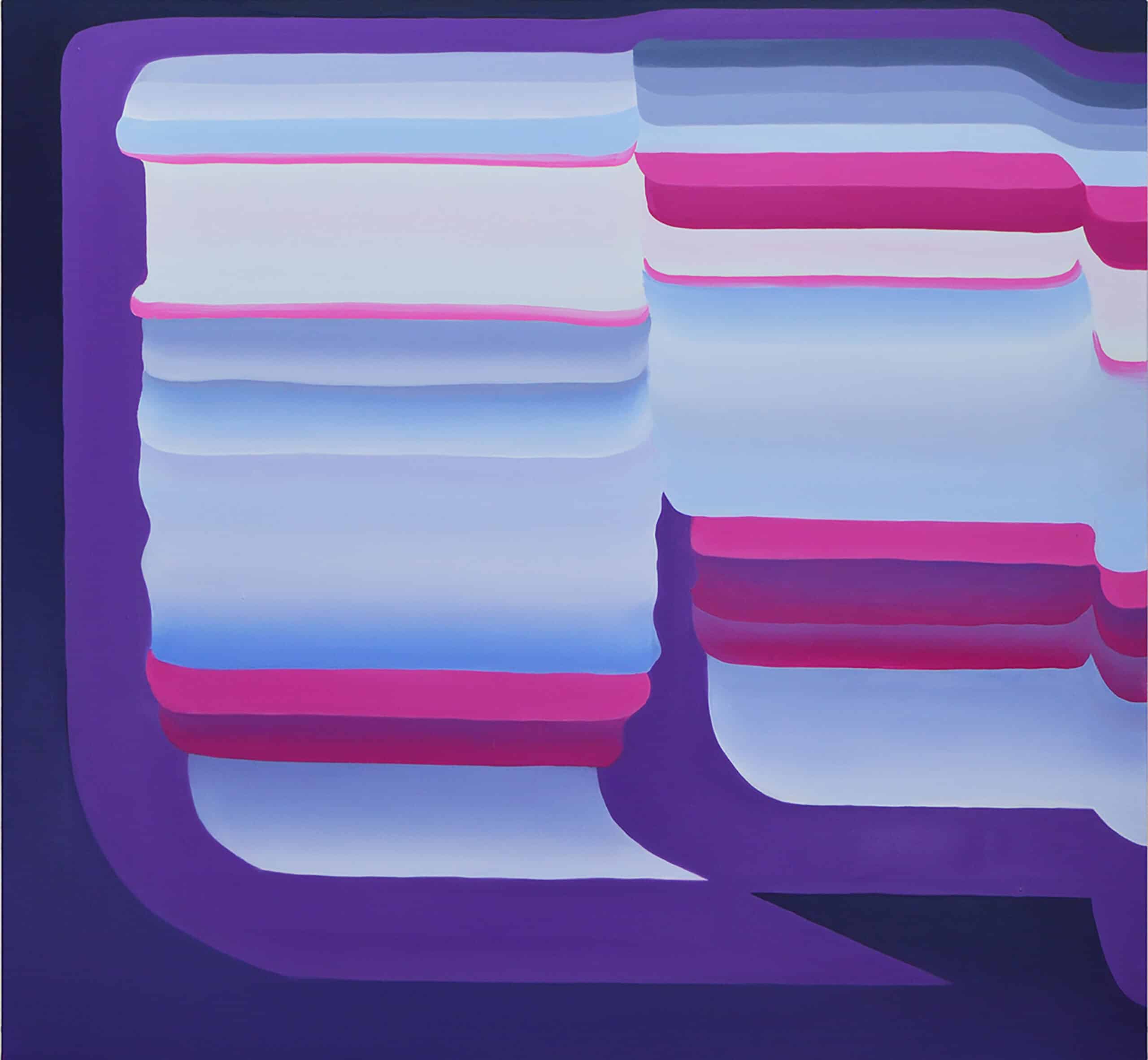
Você pode descrever seu ano de pesquisa e o que ele significou para seu desenvolvimento e sua prática?
Nguyen recebeu o prêmio Prêmio Joseph Plaskett em 2008que o levou à Europa, financiando um ano de pesquisas e viagens.
Foi uma mudança de vida. Minha proposta para o prêmio era estudar pintura histórica. Fiz de Berlim minha base de operações durante o ano.
Pude viajar pela Europa, Europa Ocidental, Londres, Bruxelas, Amsterdã, Paris, Madri. Vi o máximo de pinturas que pude de todas as épocas, desenvolvendo meu conhecimento histórico sobre arte. Como canadense, eu não tinha acesso a esse tipo de pintura, pois esses países querem mantê-las. Nessa viagem, descobri o Prado e as incríveis obras de Claude Lorrain e Bartolomé Esteban Murillo. Fiquei obcecado com a maneira como esses dois artistas pintavam superfícies por meio de camadas para criar uma atmosfera. Eles não se pareciam com nada que eu já tivesse visto antes, levando uma prática material ao ponto de parecer imaterial ou imersiva em algum nível.
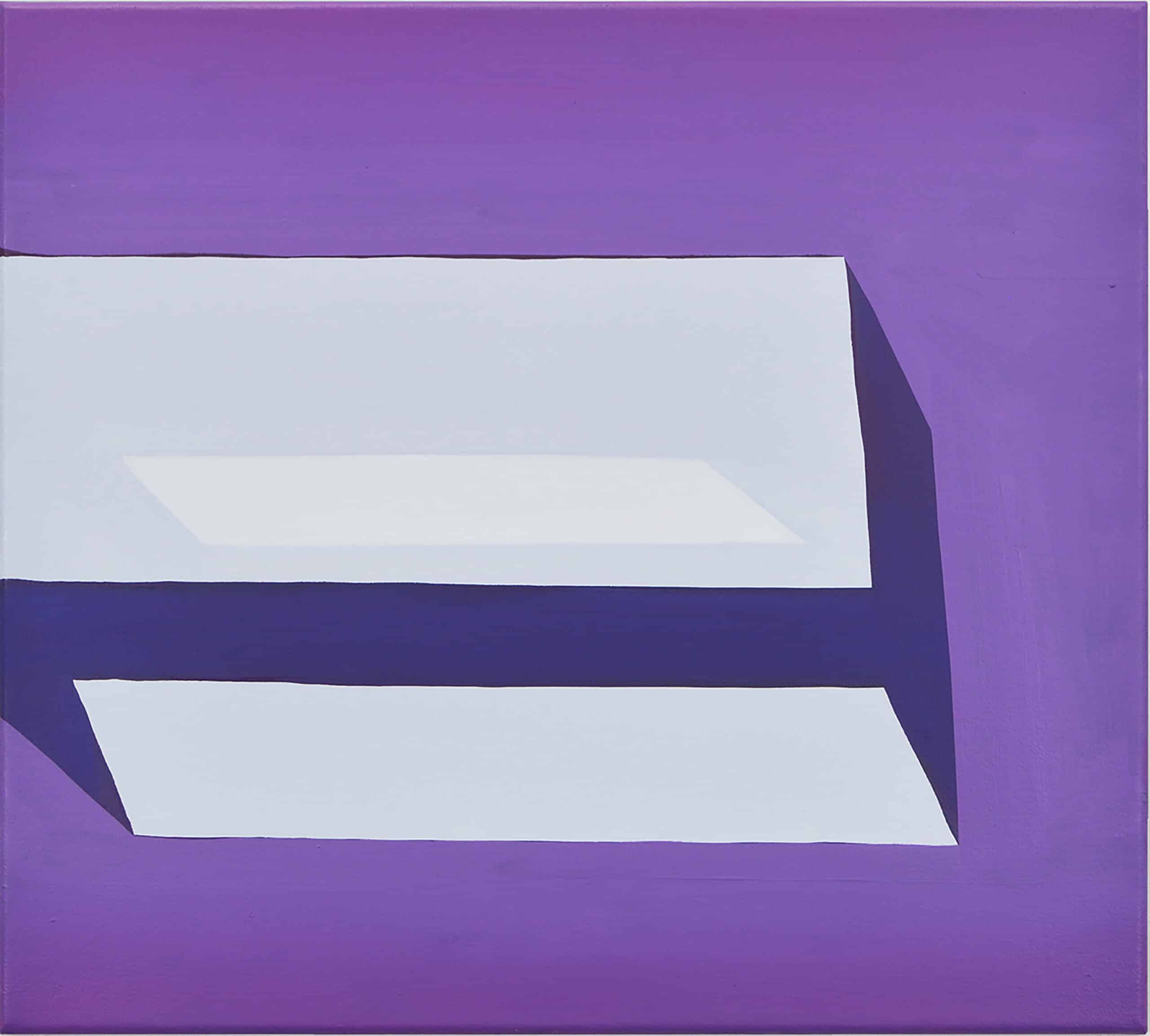
Depois de viajar, mas mantendo essa base, você se mudou oficialmente para Berlim. Fale-nos sobre a comunidade artística de lá. Como ela se compara e contrasta com outras comunidades das quais você já fez parte?
Para mim, Berlim agora é meu lar. É engraçado dizer isso porque acho que é muito difícil você se considerar um berlinense mesmo depois de 15 anos, em parte porque muitas pessoas vêm e vão. Como uma pessoa internacional, há uma enorme diferença cultural entre as cenas artísticas canadense e alemã.
Grande parte disso se deve ao fato de haver tantos artistas de tantos lugares. Você é constantemente desafiado com suas próprias suposições sobre arte. Pode ser um lugar difícil para desenvolver uma rede e uma comunidade porque você está tentando superar as diferenças culturais.
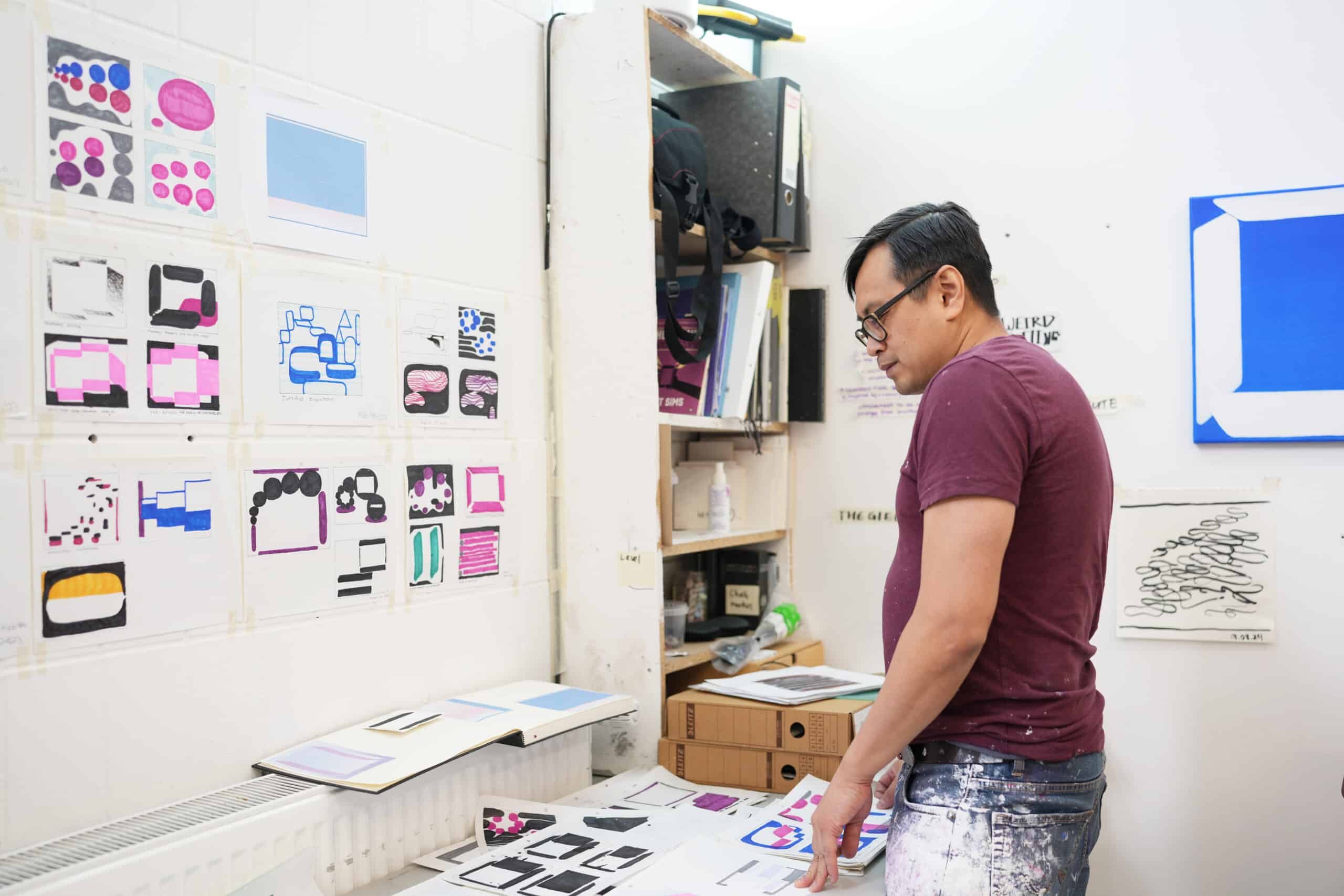
Nos últimos anos, seu trabalho se tornou muito mais abstrato e focado no material. O que provocou essa mudança para você?
Durante minha pesquisa para o Prêmio Joseph Plaskett, estudei muitas pinturas da era barroca que retratavam a atmosfera. Depois desse ano, comecei a trabalhar sobre a atmosfera como uma metáfora da condição humana afetada por preocupações contemporâneas, como o consumismo. Esse projeto me consumiu por cerca de cinco anos e foi frustrante porque eu não sentia que havia atingido minha meta de recriar aquela atmosfera barroca em um contexto contemporâneo. De certa forma, isso foi bom porque me fez perceber a importância desse problema da arte para mim. Assim, minha prática passou a se concentrar no artesanato por meio de pinturas monocromáticas.
Lembro-me de que estava trabalhando nessa peça monocromática marrom e tive um momento de eureca, pois havia colocado essa pintura em camadas com essa tinta marrom e ela tinha um tipo de energia semelhante à qualidade da tinta que eu via nas obras dos museus. Fiz algumas pesquisas e descobri que o marrom, por ser uma das cores mais baratas de se produzir, significa que as tintas são realmente muito puras. Cores como o âmbar queimado são essencialmente feitas de sujeira, de modo que a empresa não precisa adicionar muitos enchimentos. Descobri que a maioria das outras tintas não é assim. A maioria das tintas comerciais, a menos que você pague muito dinheiro por elas, tem uma tonelada de cargas, o que significa que elas se afastam do pigmento puro e isso altera sua textura, sua cor e a forma como captam a luz.
O meu momento de surpresa foi quando percebi que, é claro, as pinturas que eu estava estudando nos museus eram todas pré-industriais. Ou seja, todos esses artistas tinham de fazer sua própria tinta. Eles literalmente tinham que moer seus próprios pigmentos para obter as cores e a superfície que eu estava vendo. Então pensei, Certo, é isso que preciso fazer. Então, comecei a fazer minha própria tinta a óleo e, por meio desse processo, meu trabalho realmente se abriu. As ideias de atmosfera, de luz, realmente se encaixaram porque eu estava obtendo a cor e a luz que queria. Eu tinha controle total sobre esses elementos e isso me permitiu abrir o trabalho para que ficasse menos preso a imagens. Ao aprender mais sobre minha arte, pude criar uma linguagem abstrata.
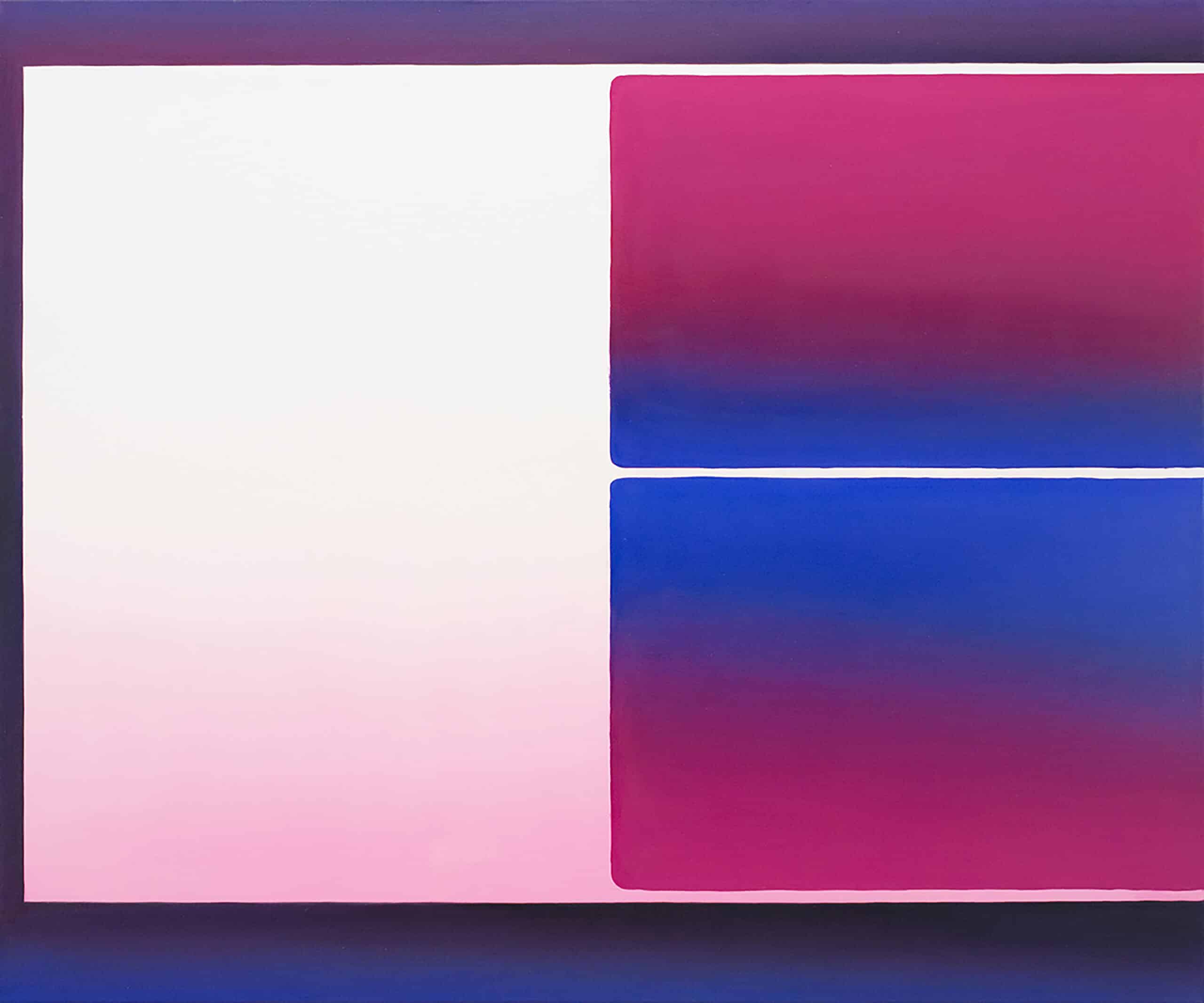
Você pode falar sobre espaço e lugar em relação ao trabalho que está fazendo agora? Como isso mudou para você?
A sensação de espaço em minhas pinturas é derivada de um lugar, um momento ou uma experiência. Quer eu saiba ou não, quando estou fazendo a pintura, estou captando memórias de luz e espaço, que são filtradas pela linguagem abstrata que desenvolvi. Quando cresci em Edmonton - o céu é tão amplo -, as lembranças desses céus ainda ressoam no trabalho que faço hoje.
O céu também é como um tipo de espaço que é realmente fascinante para mim porque tem todas as qualidades de uma grande pintura. Talvez seja a primeira grande pintura no sentido de que tem profundidade infinita, tem cores infinitas, muda o tempo todo, surpreende você. E quando você olha para ela, tem que olhar novamente porque não é o que você viu e um momento dura apenas um segundo e depois muda. Estou olhando para o céu o tempo todo, e o que aprendi é que cada céu em cada lugar é diferente. As qualidades da luz, a arquitetura (ou a falta dela) ou a abertura de um espaço, a temperatura - todas essas coisas mudam o céu da mesma forma que mudam uma pintura.
Da mesma forma que as mudanças na cultura dos diferentes lugares em que morei, sinto as mudanças no céu mais do que qualquer outra coisa. Em Vancouver, quando morei lá, houve um período em que choveu por cem dias seguidos. Era muito cinza. Em Halifax, o céu era realmente dinâmico, com chuva e vento intensos em um dia e sol no dia seguinte. Em Berlim, ando de bicicleta pelo parque onde moro, o Tempelhof Park, como fonte de inspiração para me lembrar do espaço, de explorar o espaço dentro desse lugar. Estou sempre procurando espaços em minha pintura que sejam informados por essa exploração diária de olhar para cima.
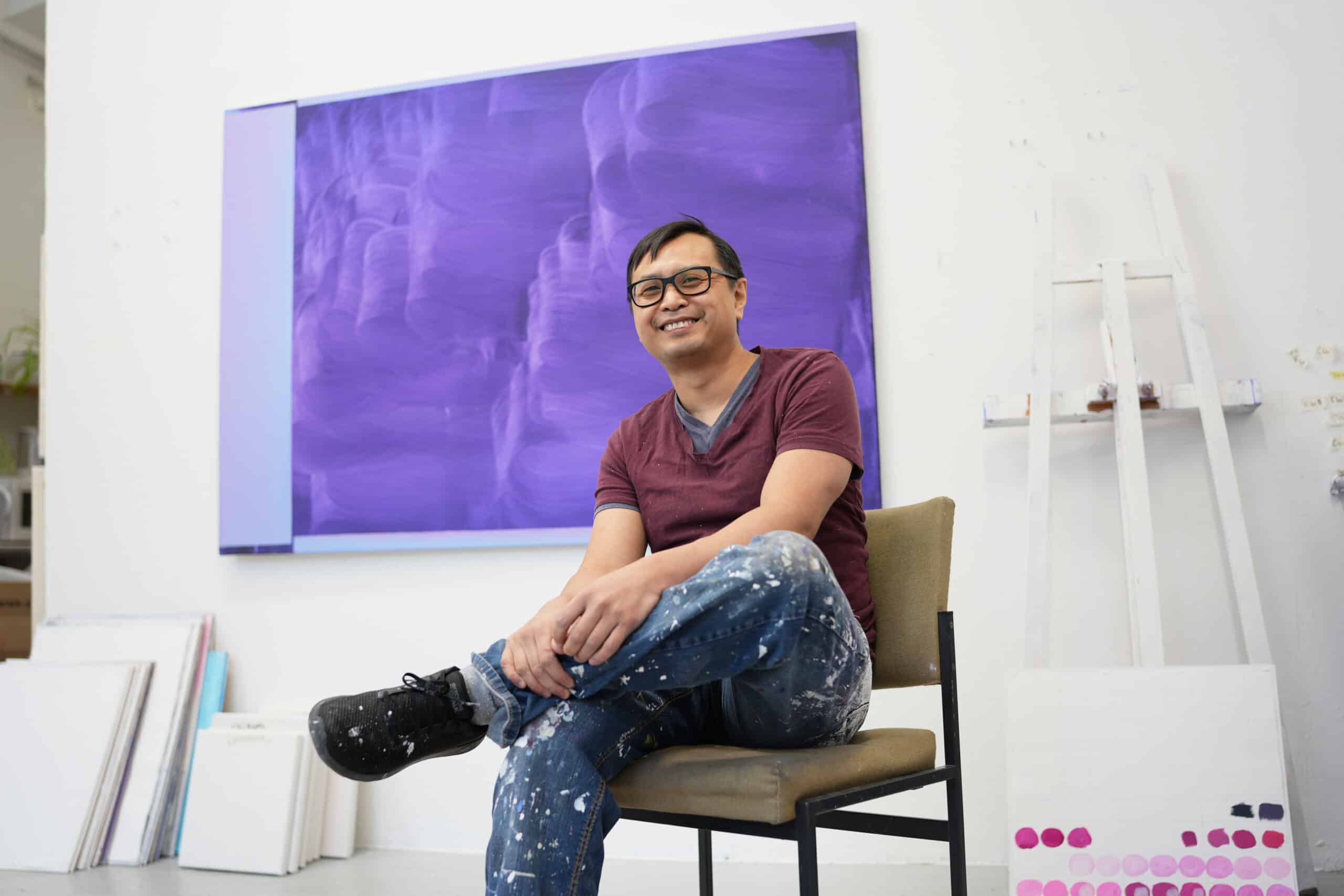
Qual é a sua relação com a maestria na pintura? Você sente que sua prática atual está muito ligada ao domínio dos materiais.
Gosto dessa pergunta porque acho que a maestria na pintura, especialmente no artesanato, é muito difícil. Acho que a maestria pode ser associada à autoridade. A maestria pode ser associada ao controle e à perfeição. E todas essas associações são justas. Mas acho que, pela minha experiência de ver o que eu diria serem pinturas magistrais, seja Rothko, de Kooning, Joan Mitchell ou Rembrandt, depois de analisar de perto a obra deles desde o início, você percebe que eles fizeram por merecer. Que houve etapas, que tudo começou em algum lugar e, por meio de seu trabalho, eles chegaram a novos entendimentos da pintura. Cada artista estava explorando algo.
Isso leva ao meu próximo ponto, embora você possa associar [domínio] com controle e perfeição, na minha experiência, à medida que ganhei conforto e conhecimento ao trabalhar com [usar] esses pigmentos, passei a entender que o domínio é mais um processo de tentativa e erro. Acho que não há reconhecimento suficiente sobre como o fracasso é necessário no processo de aprendizado. É realmente humilhante tentar explorar um ofício porque, além de ser um trabalho árduo, o trabalho árduo é importante, mas aprendi que preciso ser extremamente atencioso e cuidadoso no momento de fazer. Todo artista, todo grande cozinheiro sabe disso, todo grande escritor sabe disso. Os pontos altos são alcançados realmente pelo fato de os artistas estarem no limite do aprendizado constante.
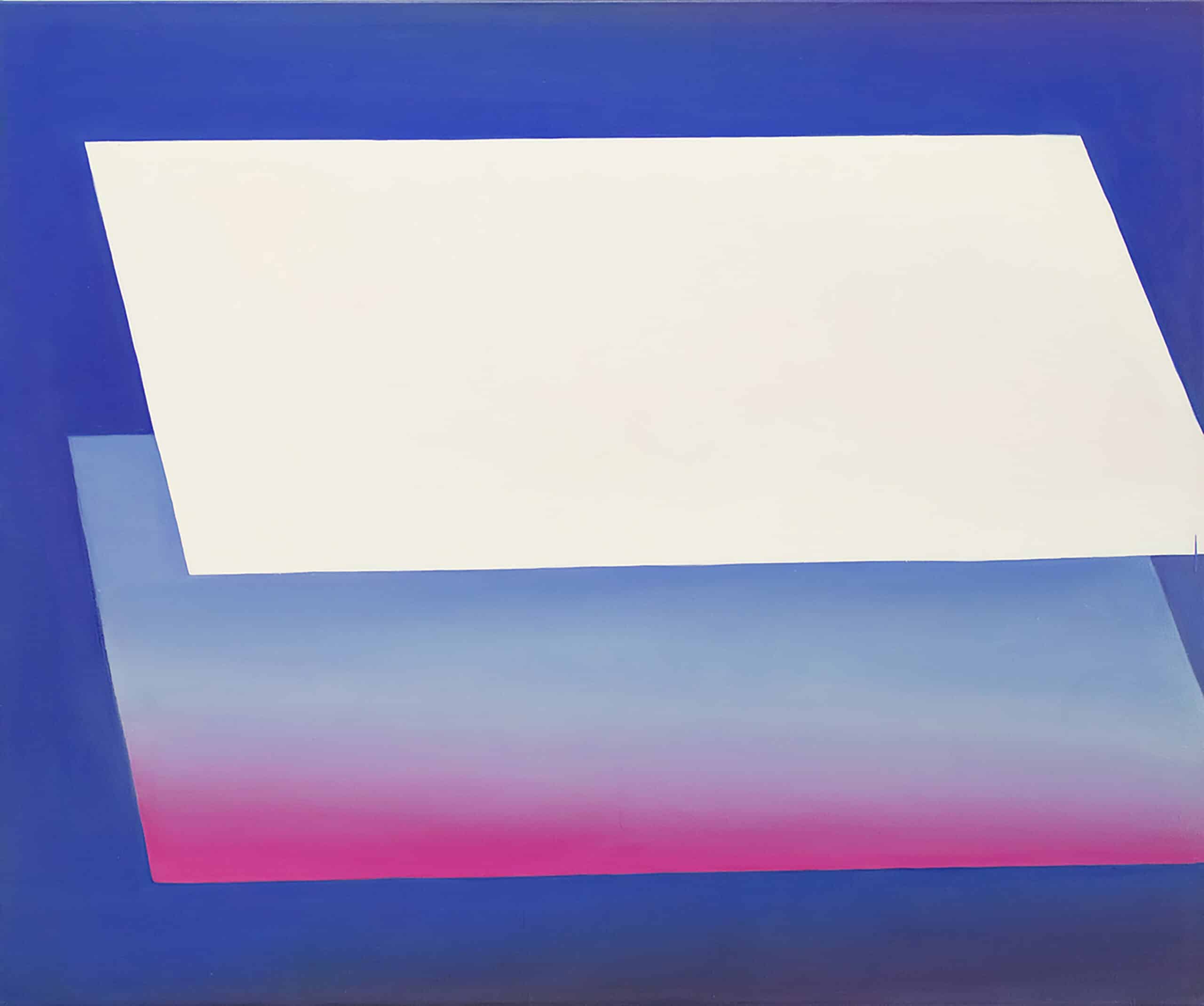
Conte-nos sobre sua próxima exposição na Art Gallery of Grand Prairie.
Tenho uma exposição na Art Gallery of Grand Prairie em janeiro. A abertura será em 30 de janeiro. É uma exposição para duas pessoas com o artista Lionel Allingham. A curadoria é de Jessica Groome, e o conceito de Jessica para a exposição faz parte de uma série em que ela traz artistas históricos de sua coleção e os combina com um artista contemporâneo mais jovem. Assim, o conceito da exposição, chamada "Um segundo horizonte"- tem o nome de uma de minhas pinturas - explora como cada artista reage ao lugar. Nesse caso, a região norte de Alberta; Grand Prairie para Lionel e Edmonton para mim.
É a nossa resposta ao céu e à paisagem da região e como isso influencia nossas pinturas abstratas. É impressionante ver alguém que não conheço, [com quem] nunca conversei, fazendo pinturas abstratas dos anos 70 e 80 que dialogam com as minhas, quer eu soubesse ou não, elas eram... é meio estranho.
Ambos exploramos o envidraçamento, ambos exploramos o tipo de expansão, ambos exploramos as cores rosa e azul, que é uma característica comum do céu de lá. Estou muito animado com isso. Também será publicado um pequeno livro com ele, que contará com algo em torno de 33 de meus trabalhos e um grande número de trabalhos de Allingham.
Esse programa, iniciado pela curadora Jessica Groome, é excelente porque está estabelecendo essas conexões e conversas entre os artistas.
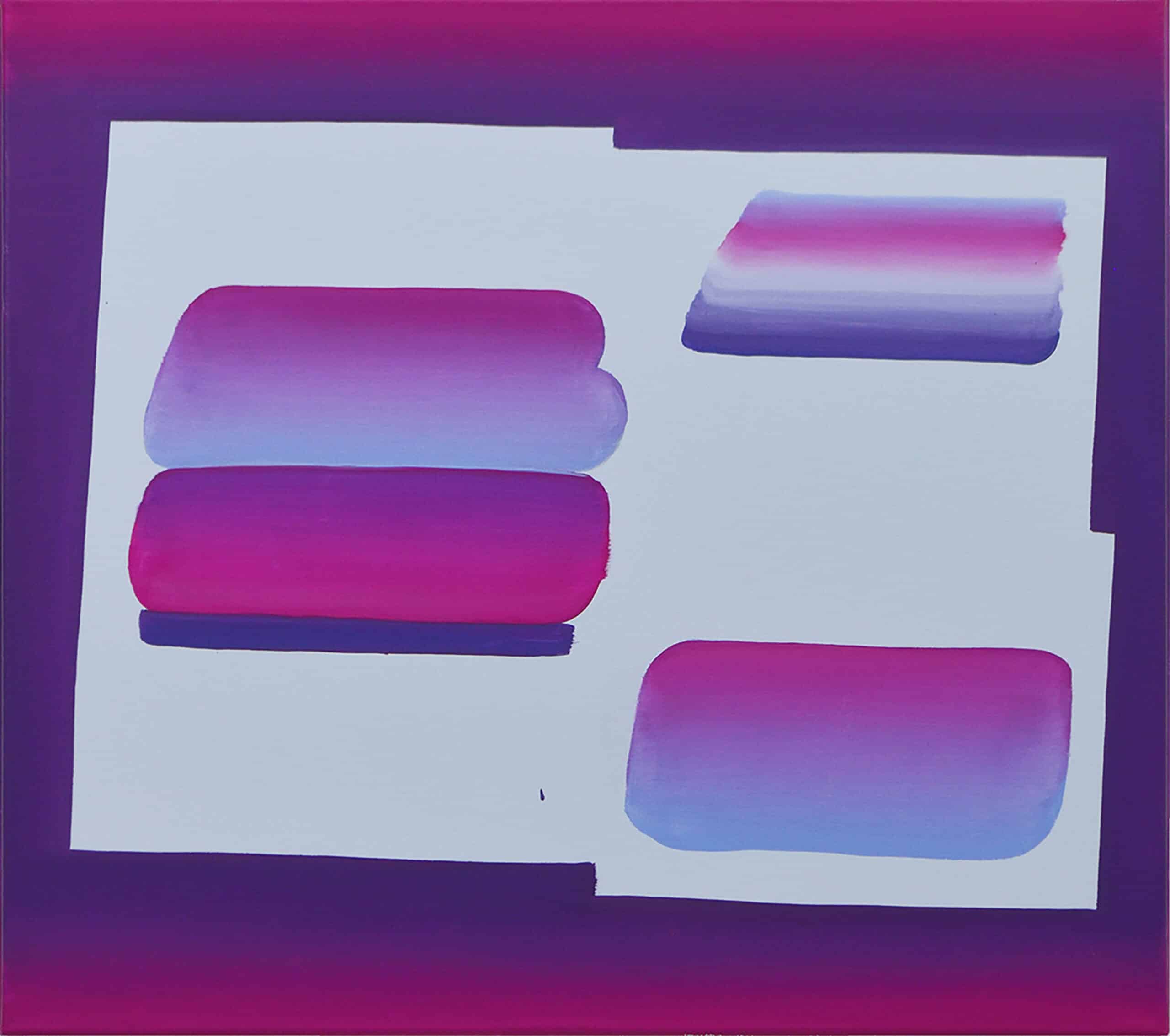
Se você tivesse que recomendar seus cinco melhores lugares para ver arte em Berlim, o que diria?
Acho que para qualquer pessoa que venha a Berlim, meu primeiro lugar seria o Galeria Nacional porque todo mundo precisa ver o Casper David Friedrichs no último andar. Essa é uma das coisas que Berlim oferece e que pode mudar sua vida.
O Brücke Museum em Wilmersdorf, que é uma espécie de bairro em Berlim, tem uma coleção de expressionismo que eles também fazem um bom trabalho de curadoria, combinando obras expressionistas com artistas contemporâneos.
Os Galeria Gemälde provavelmente seria o número três, principalmente por causa de sua coleção permanente. Também é um ótimo lugar se você quiser ver outras coisas, pois há um grande complexo cultural chamado Fórum cultural. Há também um museu de design e acho que uma coleção de desenhos.
Novo Nacional tem uma coleção de arte do século XX muito forte. O museu foi projetado por Mies van der Rohe e é lindo. Eles têm exposições especiais e uma excelente coleção permanente.
Também quero destacar a sala de projetos, HilbertRaum. É uma instituição em Neukölln e continua existindo há mais de 15 anos, com exposições a cada duas semanas, o que é uma programação insana. Acho que sempre há algo acontecendo lá. Ele realmente representa uma parte da comunidade local.
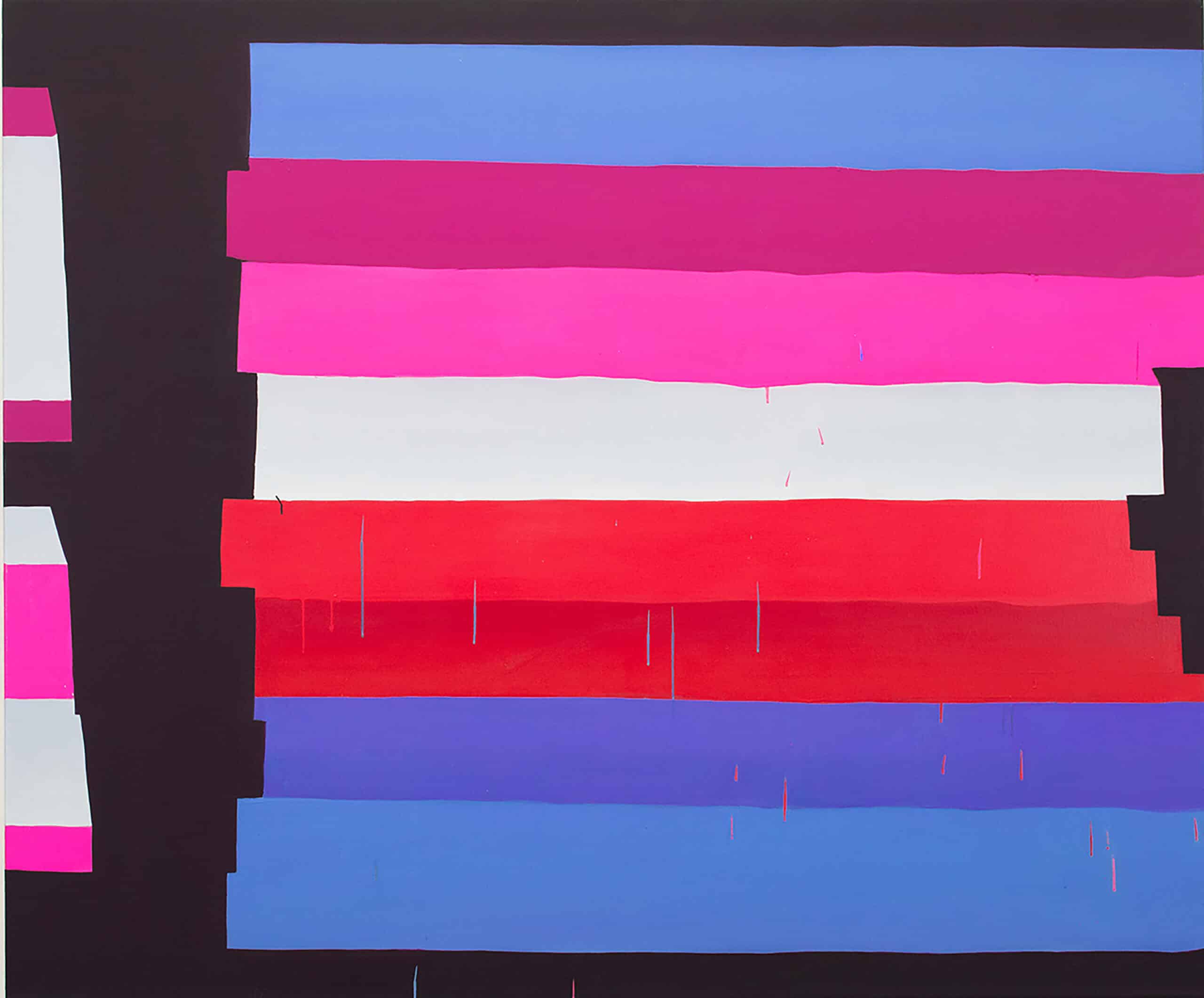
Que conselho você daria a artistas aspirantes ou emergentes?
Acho que, para todos os artistas, mas especialmente para aqueles que estão tentando entrar no cenário, tudo tem a ver com as pessoas. Você está fazendo arte para outras pessoas. Você está vendo a arte que foi feita por outra pessoa. Nem sempre vou a aberturas porque tenho uma bateria social baixa, mas adoro pedir visitas a estúdios, fazer visitas a estúdios e interagir com outros artistas individualmente. Também adoro me reunir com amigos para ver exposições juntos e estar aberto a qualquer oportunidade de conhecer novas pessoas.
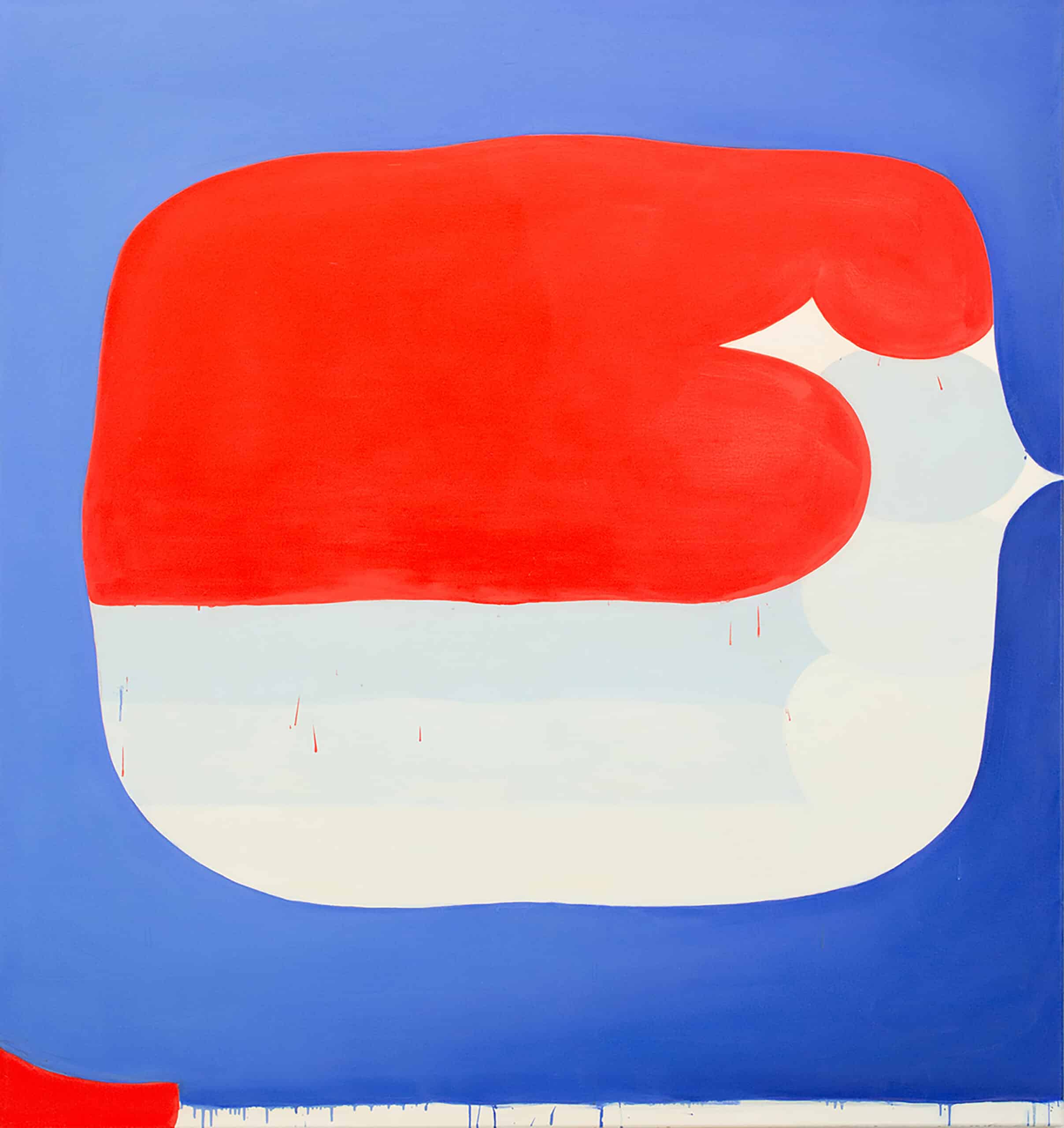
Qual é a função do seu portfólio em sua carreira?
Acho que meu portfólio é muito importante para minha carreira, mas também para minha criatividade. É claro que para a minha carreira, porque ele oferece às pessoas uma história visual do meu desenvolvimento. Meu portfólio é o melhor ponto de referência para falar sobre minha trajetória como artista. Mais recentemente, eu realmente gosto dele porque, à medida que me torno um artista mais experiente, tenho esse portal para olhar para trás e ver meu trabalho sob uma luz diferente. O portfólio oferece uma visão do seu trabalho, que vem de uma certa distância no tempo e no espaço. Posso ver meu trabalho antigo novamente e falar sobre ele com alguma sabedoria e perspectiva que tenho agora, que não estariam necessariamente presentes no momento da criação, quando você está com o ego preso, sensível e inseguro. É interessante olhar para o trabalho de uma década atrás e ver como meu trabalho está diferente, mas também como ainda há ideias centrais ou habilidades daquele trabalho que estou levando adiante - que ainda estou aprendendo a fazer as mesmas coisas.
Para ver mais do trabalho de Nguyen, Confira seu portfólio Format.
Crie seu portfólio com o Format
Criador de portfólio on-line classificado como #1 por artistas e criadores.
